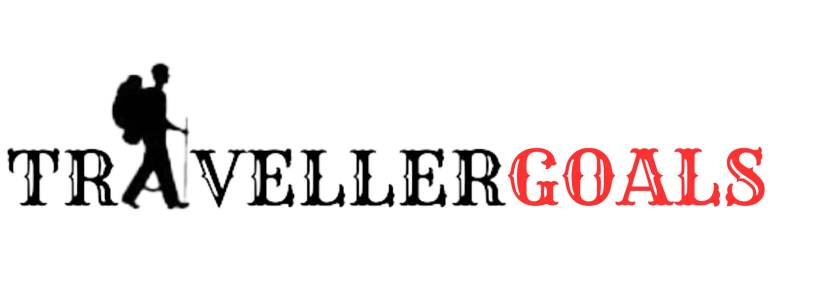If you want to start mountain biking, this book will help you. There are a lot of tips and tricks in it that I learned from riding and from other riders. That makes it perfect for people who are just starting out.
We will talk about different types of mountain biking, how to choose and ride a mountain bike, clothing, gear, and a lot more.
Here you will find a wide range of bikes that you can use to ride on local trails, enjoy nature, or have fun going off-road.
Let’s get started!
What Does Mountain Biking Mean?
Mountain biking is riding a mountain bike on rough ground, like on trails, in forests, or on dirt or gravel roads.
Mountain bikes have a suspension fork (and sometimes a back suspension too), a flat or high-rise handlebar, and tires that are wide and have knobs on them.
The geometry of these bikes is more upright than that of road bikes, so the person can sit up straighter.
Because of these things, mountain bikes are one of the most useful types of bikes. They make it possible to ride on almost any surface.
People like mountain biking because it lets them connect with nature, get some energy, go on adventures, and see new places.
What You Need to Do to Start Mountain Biking?
These are the most important steps you need to take to start mountain riding.
1. Clarify Your Goals and Expectations
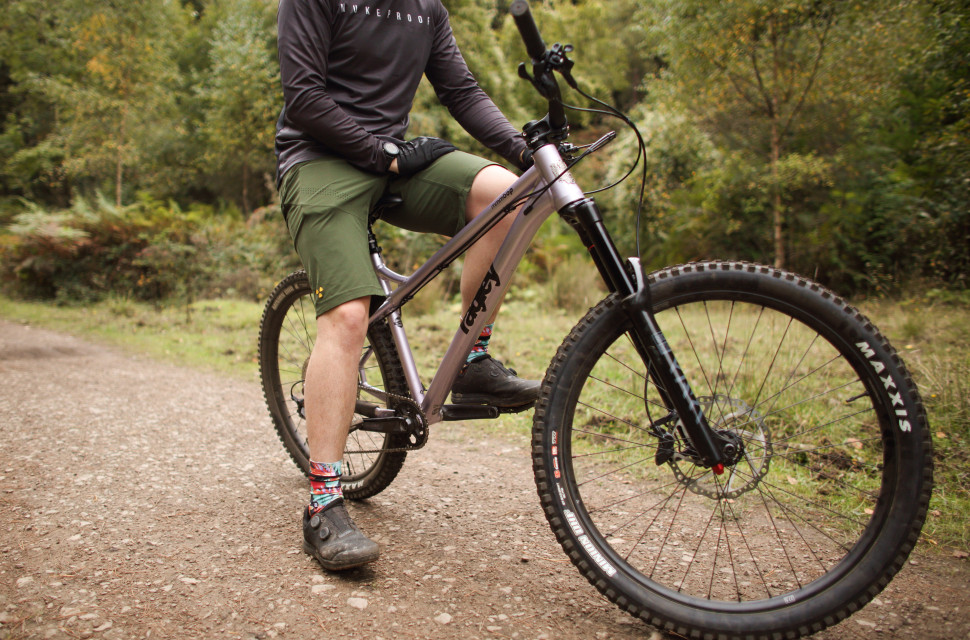
You’ll understand why you want to go mountain biking if you make your goals and expectations clear.
On a long-term level, knowing what drives you will help you. You might feel like stopping cycling sometimes.
You can keep going, though, if you remember why you started.
Push your limits, learn how to handle a bike properly, get a rush of energy, meet new people, and get fit. On and on it goes.
2. Buy Bike Accessories
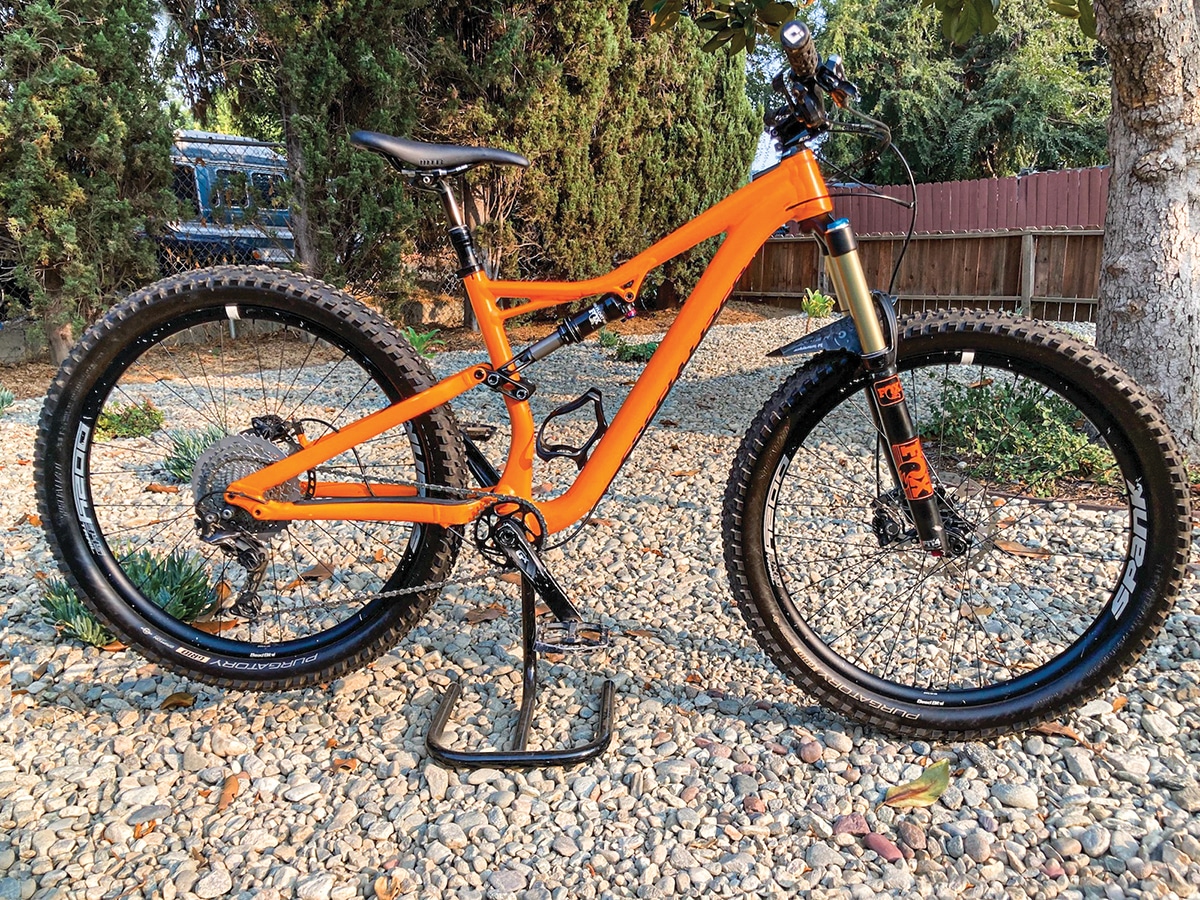
You don’t have to buy bike gear, but I really think you should. I would pick a bicycle helmet if I had to pick just one tool.
It can actually save your life, but you don’t have to wear it in every state or country.
This study found that having a bike helmet cuts the risk of getting a head injury by about 60%.
Don’t forget that different MTB styles need different amounts of safety gear. Read my piece on picking out a bike helmet to learn more.
Depending on the area you will ride, you might also want to buy other parts for your bike.
An air pump, tire levers, a multitool, and an extra tube in a saddle bag are all great ideas. If you get a hole, they will save you.
You could also think about bike bottles or a camelback, protection, a first aid kit, and other things.
3. Get a Mountain Bike
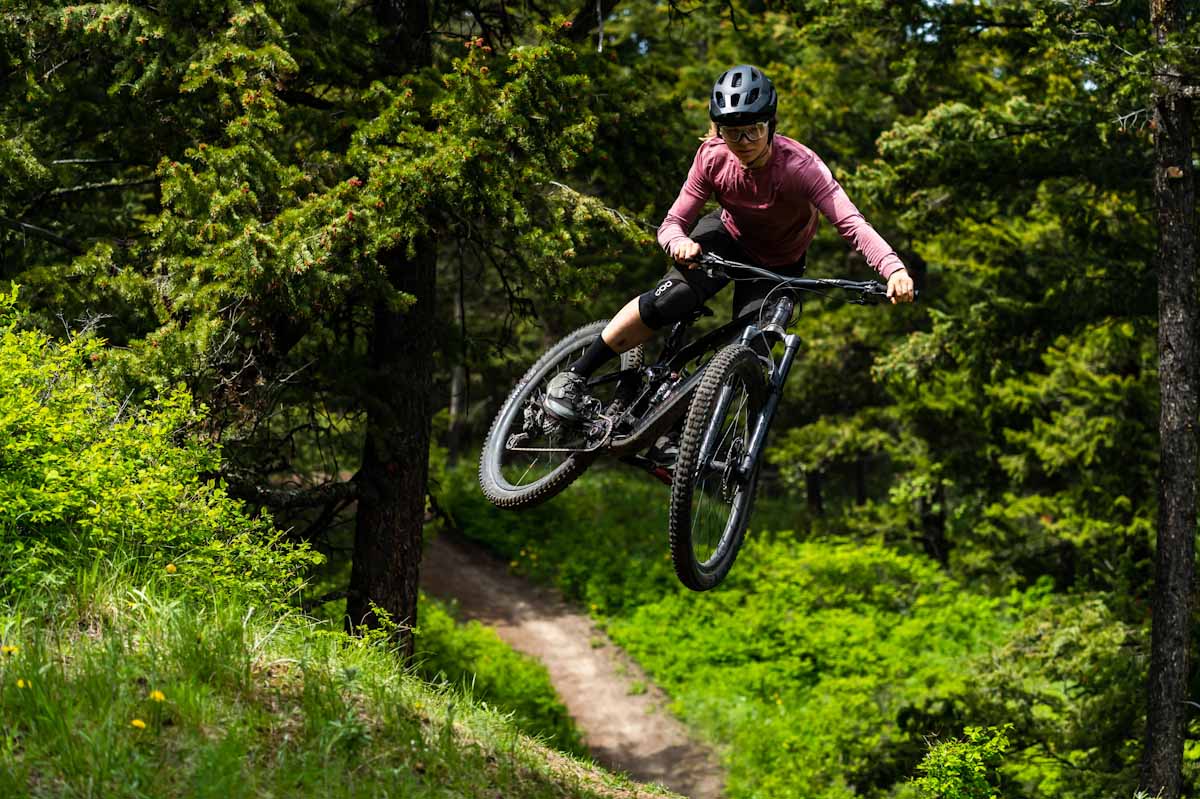
If this is your first time mountain riding, you don’t need to buy a brand-new bike.
Before you buy a new one, I think you should take one from a friend or rent one at a trail bike park.
You won’t have to spend money on something you might not like this way.
Another way to save money is to buy a used MTB, but you should ask a friend with more bike experience to help you make sure the bike(s) you choose are in good shape.
If you really want to buy a mountain bike, read my piece “How to Choose a Mountain Bike?” to find out what to expect and what to look for.
In short, here are some things you should think about:
1. Bike model and wheel size
2. Type of bike (full-suspension or hardtail)
3. Type of mountain riding (downhill, cross-country, trail?)
There are different kinds of mountain bikes, different types of suspension, different wheel sizes, parts, and more that are talked about in this piece.
Mountains Biking Types
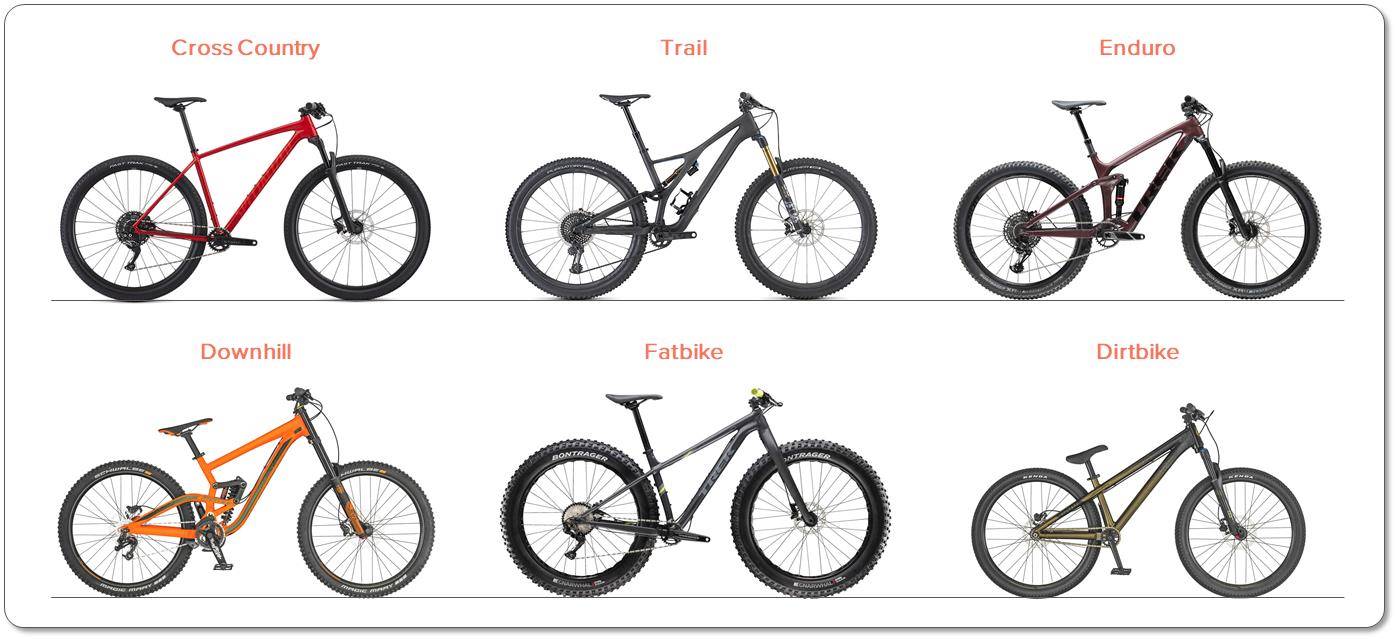
Mountain riding is many things. There are different types of MTB riding based on the landscape and how hard it is.
There are different kinds of mountain bikes for each of these activities.
The table below shows how the suspension travels for different types of mountain bikes.
| Type of Mountain Bike | Suspension Travel |
|---|---|
| Cross-country | 90-120mm |
| Trail | 120-150mm |
| All-Mountain/Enduro | 150-180mm |
| Downhill | 180-200mm |
1. Cross-Country
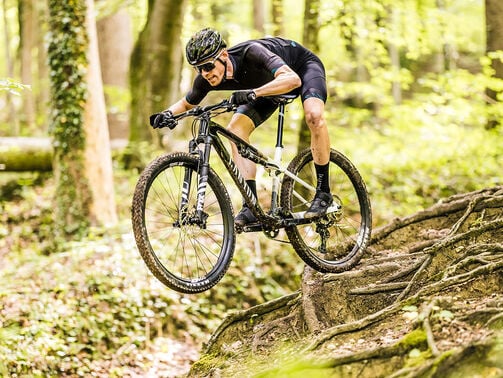
One of the most famous MTB sports is cross-country (XC). Individual trails and bush roads are where it happens most of the time.
It has difficult parts with roots, rocks, mud, and other things, and you have to climb. This is another reason why XC mountain bikes tend to be light and have hardtails.
Cross-country biking is different from other types of MTB because it’s more about how fast you can finish the race, and there are a lot of XC competitions.
2. Trail
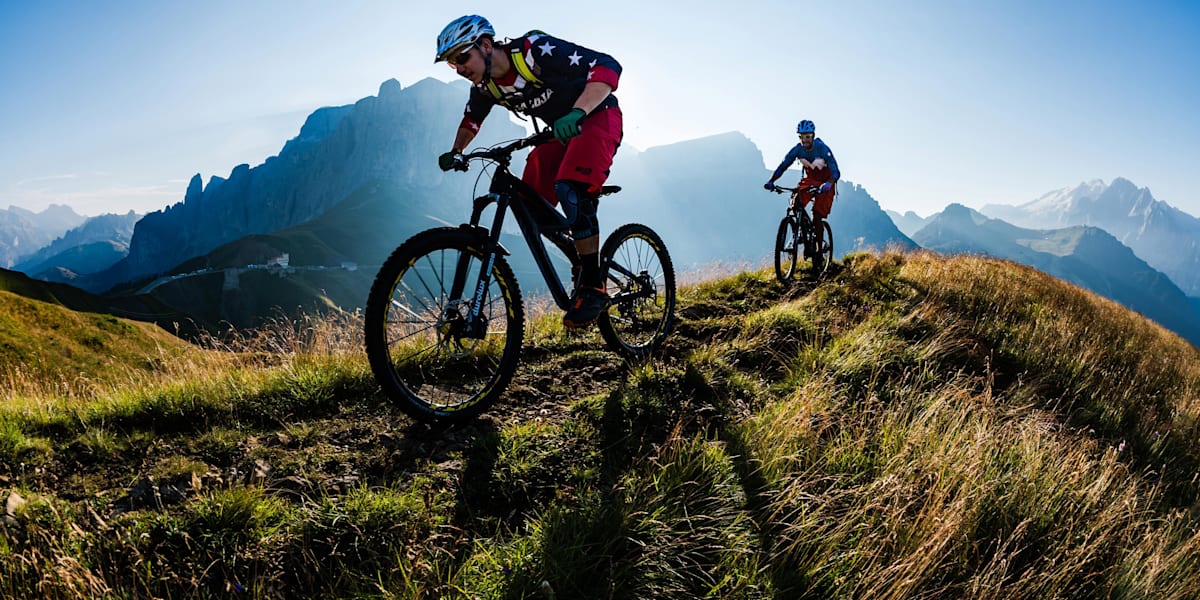
Along with cross-country biking, trail mountain biking is popular with new, intermediate, and expert riders.
This is because it’s a lot of fun and has riding tracks with different levels of difficulty (see below for this guide).
The wheelbase of a trail bike is bigger, and the suspension travel is longer. This lowers your center of gravity and makes you more stable by bringing your body closer to the ground.
Classic trail bikes have full suspension, but these days, hardtail trail bikes are also popular because they are cheap and can be used for many things.
Trail Grading Guide
Most trailheads have more than one trail of varying levels of difficulty. A color on the trail generally shows how hard it is.
It goes from green (the easiest) to blue, red, black, and double-black (the hardest). This rating may be a little different in each country, but it’s pretty much the same as how ski resorts grade the difficulty of their runs.
You need to be very good at riding your bike in bike parks because they use orange.
To learn more, look at the table below:
| Trail Grades | Difficulty | Suitable for |
|---|---|---|
|
Green
|
Easy | Beginners |
|
Blue
|
Moderate | Intermediate |
|
Red
|
Difficult | Proficient |
|
Black
|
Severe | Experts |
|
Orange (bike parks)
|
Brutal | Elite |
3. All-Mountain/Enduro
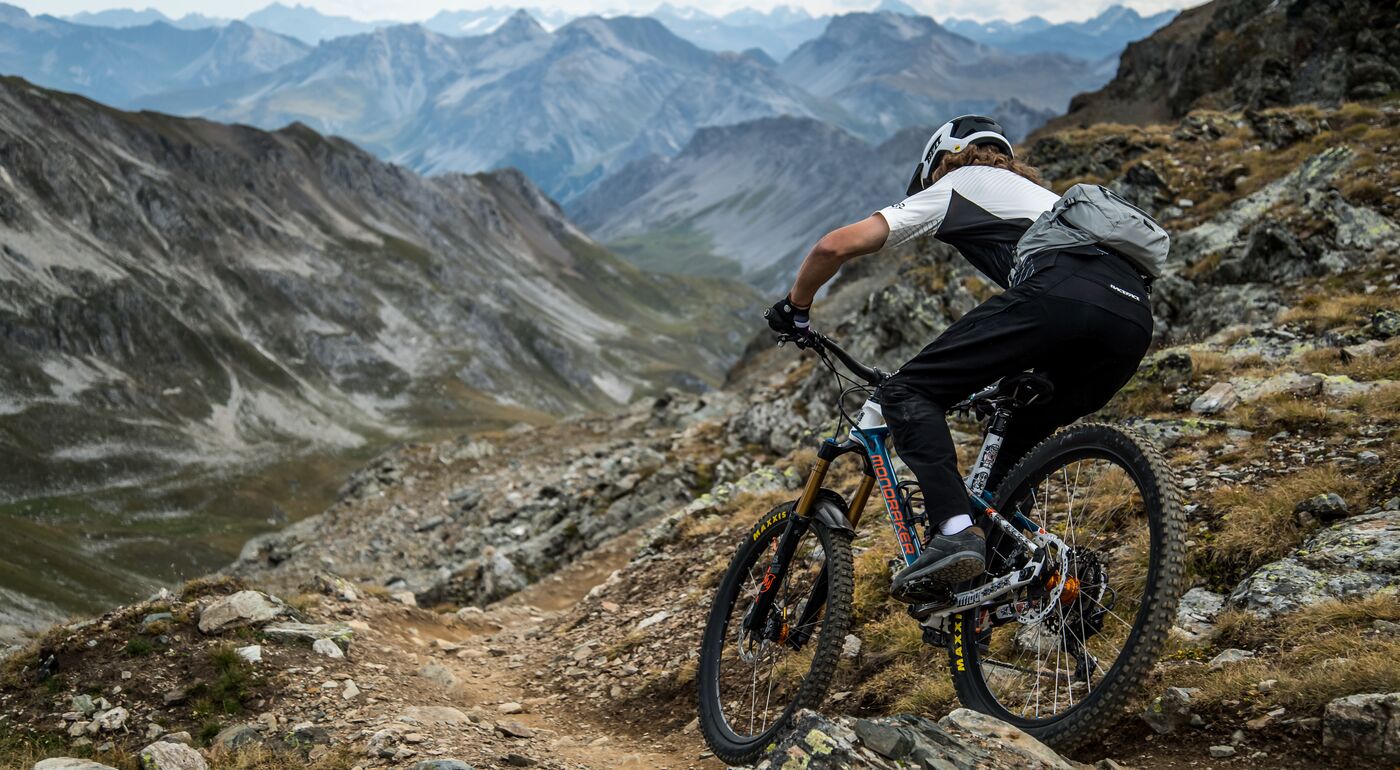
Most types of MTB riding can be found in all-mountain/enduro, but it’s harder.
It has bigger jumps and drops that are steeper. You can think of it as road riding that is harder.
There are no clear limits in enduro. With enduro mountain bikes, you can ride (almost) anywhere. How you use this to your advantage is up to you.
4. Downhill
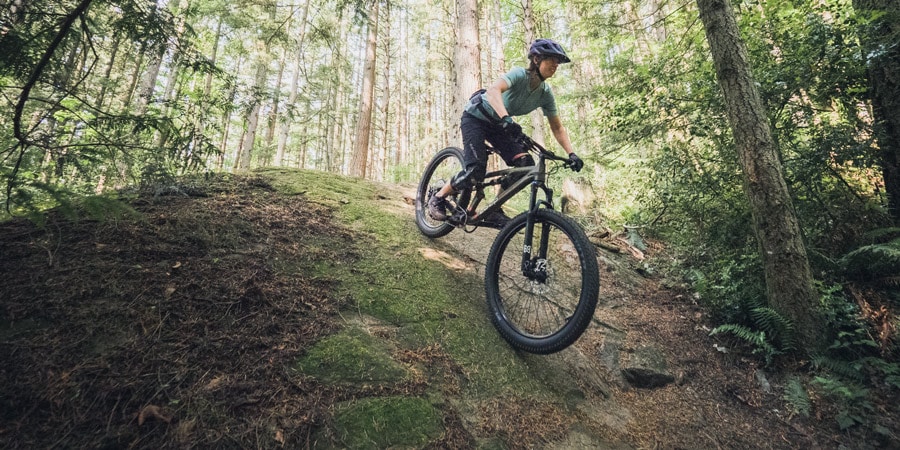
A downhill bike with long suspension travel (180-200mm) and a double-crown fork and shock is used for downhill mountain riding. This type of bike can handle big jumps, bumps, and other obstacles.
It’s built like a trail bike, but it’s tougher. Again, it’s because it has a lower center of gravity and is more stable overall.
Types of Mountain Bikes
I already wrote about the different types of mountain bikes based on the types of terrain they are made for. Now, let’s quickly talk about some other ways to group MTBs.
Suspension
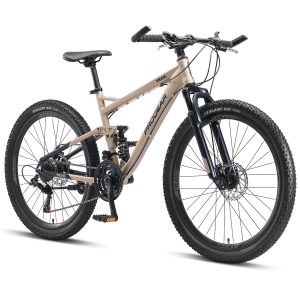
When you shop for a mountain bike, you will see both hardtail and full-suspension bikes.
From what I’ve seen, hardtails are more sensitive because they are lighter and lose less energy because they have a rigid rear triangle.
They aren’t as comfy, though, and they’re not good for rougher ground. In difficult parts, they won’t let you ride as fast downhill either.
Take a look at the table below, which lists the pros and cons of both types of punishment.
| Pros | Cons | |
|---|---|---|
| Hardtail | • Lower the weight of the bike • Lack of rear suspension maintenance • Lower price • Lower energy loss when pedaling • Better for climbing |
• Right riding technique for rough terrain needed • Not as comfortable as full-suspension bikes • Doesn’t handle rough terrain as well as full-suspension bikes |
| Full suspension | • Better comfort in rough terrain • More versatile (jumps, drops, rock gardens, roots…) • Easier to ride in more difficult terrain • Better for downhills |
• Higher price • Higher overall weight of the bike • More parts that can break • Rear triangle maintenance |
Wheel Size
There are also different wheel sizes for mountain bikes. These days, most people ride 27.5- and 29-inch mountain bikes.
There are also mountain bikes that are 26 inches. How are they different then? What makes the ride experience different?
Conclusion:
The bike is more stable and comfy when the wheels are bigger, but it moves more slowly and is less maneuverable when the wheels are bigger.
Bigger wheels also grip the ground better and are better for taller riders.
You should think about what kind of riding you will do before you buy an MTB. Putting wheels of different sizes next to each other is a good way to see how they handle differently.
How to Ride a Mountain Bike?
This part has general tips on how to stop, shift, and handle. Each type of MTB has its own rules, so I’ll give you links to other places you can learn more.
How to Use a Mountain Bike’s Center of Gravity?
How to work with your center of gravity (i.e., your body position and the position of your bike) is an important MTB skill. It makes you feel better and more confident while riding faster.
There are many helpful movies that show you how to ride and what mistakes you should not make better than words.
Here is one from the Global Mountain Bike Network that you might like.
How to Use Mountain Bike Brakes?
Mountain bikes can have either rim or disc brakes. It’s getting harder to find cheap mountain bikes with rim brakes.
Disc brakes are more common because they work better in the rough conditions of mountain riding.
When riding an MTB, the weight penalty isn’t as important as when riding a road bike. When going downhill or riding on rough ground, you need brakes that work well and you can count on.
This type of brake has both mechanical and hydraulic discs.
The hydraulic ones are easier to use because you don’t have to push down as hard on the stop lever. They also have better braking power.
But you need to be careful when you use them because they work so well.
People who are just starting out often make the mistake of only using the back brake. But you should use both brakes at the same time.
Either ride slowly at first or stop early to keep from slipping and losing control of your bike until you get better.
How Do I Change Gears on My Mountain Bike?
There are different brands of groupsets for mountain bikes. Shimano and SRAM are the most well-known.
| Shimano | SRAM | Type | |
|---|---|---|---|
| Entry level | Tourney | Mechanical | |
| Entry level | Altus | Mechanical | |
| Entry level | Acera | X5 | Mechanical |
| Mid range | Alivio | X7 X9 |
Mechanical |
| Mid range | Deore | NX GX |
|
| Mid-range | SLX | GX Eagle | Mechanical |
| Pro | XT | X1 | Mechanical |
| Pro | XT Di2 | X01 | Electronic |
| Pro | XTR | XX1 | Mechanical |
| Pro | XTR Di2 | X01 Eagle XX1 Eagle |
Electronic |
Most modern mountain bikes have 1X drivetrains, which means that you only need to change the gears in the back. But there are still mountain bikes with 2X or even 3X drivetrains.
The 2X and 3X drivetrains are heavier and more involved, and more things can go wrong. However, they give you more gear to choose from.
A 1X engine, on the other hand, makes things a lot easier.
Your chain should be on the largest sprocket on the cassette and the smallest cog for the smoothest ride. The hardest gear is the one with the smallest sprocket and the biggest circle.
Here are some ways to change gears:
- Use all of your gears based on the surface you’re riding on. A lot of people only use a few gears, which makes cassette sprockets wear out faster.
- To make the drivetrain more efficient, don’t cross-chain (2X and 3X drivetrains).
Conclusion
Mountain biking is one of the most varied types of riding. You can ride to get in shape, improve your skills, or just get a rush of excitement. It depends on you and what drives you.
I’m sure you’ll love the new places you get to see and the people you meet that share your love of mountain riding.
This piece should have been useful and given you information you can use to learn more about mountain biking.
Feel free to tell us in the comments what your best tips are or if you think this article could use some work.





